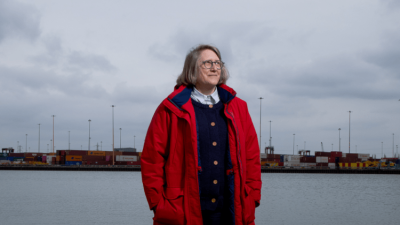
Rewriting Women into Maritime makes London International Shipping Week debut
Rewriting Women into Maritime makes London International Shipping Week debut.
This page is approximately a 3 minute read
This page was published on

The National Maritime Museum Greenwich (NMM) is a rich treasure-trove of artifacts that tell the story of the epic explorations that have shaped our modern world. From the jacket worn by Nelson at the Battle of Trafalgar, punctured by the deadly bullet, to the Cutty Sark, the last surviving tea clipper and once the fastest ship on the seas, the museum’s collection makes it a top tourist attraction.
A Foundation grant is helping to make the connection between this rich historical collection and contemporary maritime history by funding a full-time Lloyd’s Register Public Curator of Contemporary Maritime.
“NMM is the world’s largest maritime museum with important holdings on the history of Britain at sea. Maritime history often has important lessons for our understanding of contemporary maritime issues,” explained Laura Boon, the museum’s first curator dedicated to making the links between the seafaring past and the present.
“However, we needed to improve our engagement with contemporary issues, and this grant from the Foundation is helping us do that. Having a curator with specific responsibility for highlighting the contemporary relevance of our seafaring past is helping us inform public understanding of contemporary maritime issues such as trade, migration, technology and the environment.”
Laura was appointed in 2018. She has been bringing fresh, relevant stories to the NMM’s output, such as ‘Exposure: Lives at Sea’ an exhibition looking at life at sea through the seafarer’s lens. This explored the experience of people working in the very diverse maritime sector. Developed during lockdown, it includes the experience of one of the photographers being stranded on ship due to the crew change crisis caused by the COVID-19 movement restrictions.
The exhibition, which was first proposed at the start of 2020, was aimed at increasing awareness of the importance of seafarers.
During lockdown the importance of seafarers has really been driven home. The initial shortages in supermarkets made many of us more aware of the global supply chain, with over 85% of all goods being carried by ship. Although there has been an increased (and deserved) appreciation of the role that supermarket workers and delivery drivers have played in keeping our fridge and cupboards stocked, this recognition unfortunately rarely extended to seaworkers.
“The museum is committed to telling the stories of seafarers. We are working on an ambitious project in partnership with welfare charities to record the oral history testimonies of seafarers from Ukraine, the Philippines, Indonesia, India and Hong Kong plus seafarers from across the globe transiting through UK ports,” says Laura.
The environment and sustainability has been an important focus of the curator role. We all rely on the ocean every day for our very survival and yet ocean literacy (our understanding of the ocean) is low. World Ocean Day has been a significant focal point for the museum, but this has now developed into the ‘Our Ocean, Our Planet’ online hub of resources, making ocean science accessible to the museum’s audiences.
Laura is developing networks and partnerships with the maritime sector, both national and international. At the heart of her role is engaging with the public, the media and the academic research community on contemporary maritime issues and acting as a spokesperson and commentator for the museum.